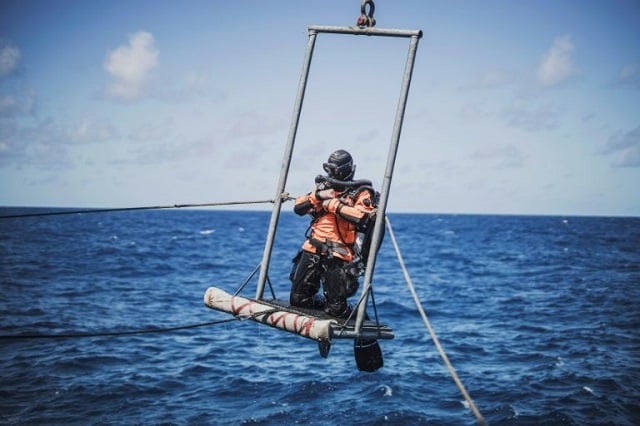
Vema, an underwater mountain around 1,000 kilometres (600 miles) off the west coast of South Africa, is a stunning marine haven.
Greenpeace researchers braved choppy seas to explore the site, seeking to monitor the impact of a trawling ban and clues of the planet's climate crisis.
PM Imran rolls out plan to combat smog, improve air quality
Armed with high-resolution cameras, divers clad in orange-and-black drysuits embarked on what was a daily ritual, disappearing underwater to capture life on the seamount.
They emerged with photographs and video footage of a site flourishing with fish, lobsters and marine plants, thanks to a moratorium on fishing.
In 2007, the South East Atlantic Fisheries Organisation (SEAFO) banned bottom trawling on Vema and other seamounts.
On Vema, overfishing had brought a local species, the Tristan rock lobster, to the brink of extinction.
Slightly over one per cent of ocean areas lying outside national jurisdictions benefit from some form of international protection, according to the UN's Ocean Action website.
Activists want more oceans to be protected as nature reserves.
Vema is fortunate to be one of the very few areas of the deep seas that enjoys such a shield.
The biologists said the results proved the positive impact of legal protection.
"The sea life down there is amazing, there's hundreds...thousands of fishes of every kind," said Greenpeace marine biologist and expedition leader Thilo Maack.
Airlines' fuel practices feed doubts over climate commitment
"There is lots of invertebrates, there is lot of crustaceans, there is lots of kelp --there is everything that a healthy ecosystem needs and what even assures me more is the fact that there's so many lobsters down there."
He added: "This is just a perfect example of what happens if we leave nature on its own for a certain period of time even if it was overfished, it will replenish."
The Greenpeace mission was part of year-long pole-to-pole expedition to lobby the UN for an international legally-binding treaty to preserve at least 30 per cent of the oceans over the next 11 years.
































1714024018-0/ModiLara-(1)1714024018-0-270x192.webp)










COMMENTS
Comments are moderated and generally will be posted if they are on-topic and not abusive.
For more information, please see our Comments FAQ